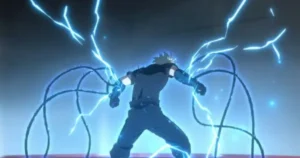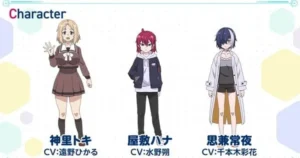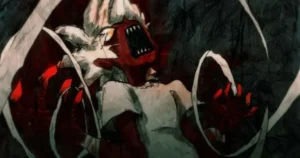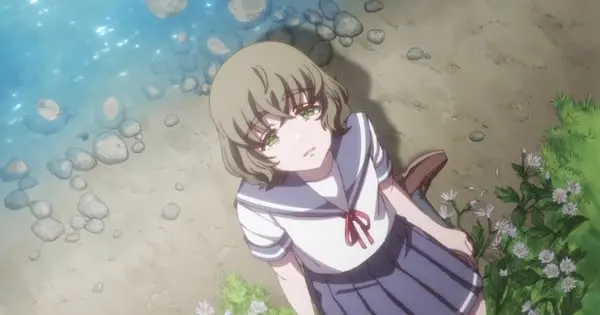What happens when a high school bowling club accidentally time travels to Japan’s turbulent Sengoku period? The original Japanese anime series Turkey! Time to Strike answers this outlandish question, blending sports, historical adventure, and personal growth. Premiering in July 2025, the series quickly establishes its unique premise, but it’s in episodes like the sixth installment, “Reverse Hook, Clear Across,” that its deeper thematic explorations truly shine, pushing characters to confront harsh realities and redefine their moral compasses.
The Premise of ‘Turkey! Time to Strike’
Turkey! Time to Strike centers on the Ikkokukan High School Bowling Club in Nagano Prefecture. The club is led by second-year student Mai Otonashi, who, despite her leadership role, struggles with consistency in her game. A core conflict arises when first-year student Rina Godai, a more serious bowler, threatens to quit due to Mai’s seemingly relaxed approach. In an attempt to convince Rina to stay, Mai challenges her to a bowling match. It is during this pivotal game that a mysterious bolt of lightning strikes a nearby artifact, engulfing Mai and her fellow club members—Rina, Sayuri Ichinose, Nozomi Mitaka, and Nanase Nikaidō—and transporting them back to the tumultuous Sengoku period (1467–1615).
Stranded in a bygone era, the girls are taken in by a young samurai named Suguri Tokura. Their immediate goal becomes finding a way back to their own time, which they believe involves recreating the unusual circumstances of their arrival—specifically, Mai and Rina scoring “turkeys” (three consecutive strikes) at the precise moment lightning strikes. However, without modern bowling alleys, their predicament forces them to adapt and navigate the complexities of 15th-century Japan.
A Deep Dive into Episode 6: “Reverse Hook, Clear Across”
Episode 6, titled “Reverse Hook, Clear Across,” marks a significant turning point, particularly for the character of Sayuri Ichinose. While the series maintains its blend of lighthearted moments and historical intrigue, this episode delves into the profound cultural and moral clashes faced by the time-traveling students.
Confronting Sengoku Realities
The core of “Reverse Hook, Clear Across” revolves around Sayuri’s struggle to reconcile her 21st-century sensibilities with the brutal necessities of the Sengoku period. With bandits roaming the countryside, the girls learn firsthand about the different values and the harsh reality of life and death in this era. A particularly impactful scene involves Sayuri witnessing Suguri kill a bandit. This act, which Suguri considers a necessary measure for protection, is deeply traumatic for Sayuri, forcing her to confront the fact that violence is a part of survival in this historical context. Her shock and distress highlight the vast chasm between her modern world, where life is not so easily taken, and the world she now inhabits.
Shifting Perspectives and Moral Dilemmas
The episode masterfully portrays Sayuri’s internal conflict as she grapples with the idea that killing might be essential to protect those she cares about. Her initial pleas to Suguri—that a bandit’s life still holds value and that taking a life is wrong—clash directly with Suguri’s pragmatic view that such actions are vital for safeguarding their community. Sayuri’s breakdown, where she confesses her origin from a future where people “don’t simply kill each other,” underscores the immense psychological burden she experiences. This moment signifies her painful acceptance that she might have to tolerate, or even participate in, acts she finds abhorrent.
Exploring Societal Norms and Character Growth
Beyond the immediate threat of bandits, “Reverse Hook, Clear Across” also subtly explores other cultural differences. The girls learn about local customs, including the concept of political marriages, such as one involving Suguri’s sister, Sumomo. The future girls’ concern over such arrangements is met with the locals’ understanding that these were common and necessary practices in the 15th century.
Significantly, this episode marks a profound evolution for Sayuri, who previously might have faded into the background. By the episode’s conclusion, she is no longer the same person, having been forced to confront the stark realities of the past and accepting that a degree of violence can be necessary for survival and protection. The narrative also introduces subtle “queer overtones,” particularly concerning Suguri and Sayuri, adding another layer of depth to the character interactions and the series’ exploration of relationships in a different time.
Broader Themes and Significance
“Reverse Hook, Clear Across” exemplifies Turkey! Time to Strike‘s ability to weave character development into its unique time-traveling premise. The episode effectively uses the historical setting not just as a backdrop, but as a crucible for character growth, particularly for Sayuri. It delves into themes of morality, adaptation, and the clash of societal values across different eras. The girls’ journey is not just about finding a way home but also about understanding themselves and the world in a more profound, often uncomfortable, way.
Conclusion
Episode 6 of Turkey! Time to Strike, “Reverse Hook, Clear Across,” is a pivotal installment that significantly deepens the series’ narrative and character arcs. By thrusting Sayuri into a direct confrontation with the brutal realities of the Sengoku period, the episode challenges her, and by extension the audience, to consider the complexities of survival and morality in drastically different historical contexts. It highlights the series’ potential to be more than just a lighthearted bowling and time-travel adventure, offering a compelling blend of action, drama, and personal transformation.









